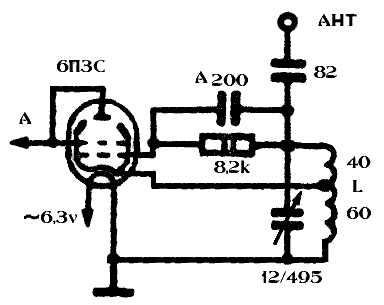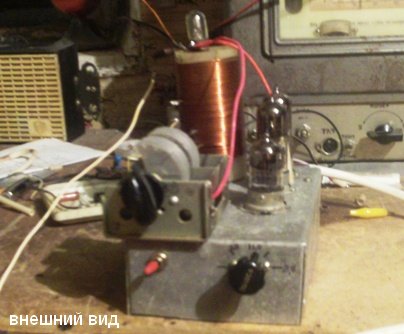
 Quote History
Quote HistoryQuoted:
That is a very clean 'ginny! You did a good job bringing it back to life.
That you were able to use it right off the bat is a testament of your operating skills. Many people have trouble getting used to a regenerative detector. They are a tad touchy.
It's amazing what two tubes can do. Regenerative detectors were use in spy transceivers that MI6 agents used during WWII. They were called "Parasets" and were based on what many hams started out with in those days. The transmitter portion was a one stage crystal controlled oscillator.
View Quote
Back in my young days, we built a simple transmitter based on a single tube. The transmitter worked in conjunction with a regular SW tube receiver. Of course it was illegal

but I knew a lot of guys (including myself) who built and ran them.

Power output was around 3 Watts max. The coil was made on a piece of wood. Some used a 12 Ga shell. LOL. It worked to about 20-50 miles during day time and up to 1,000 miles at night, with proper antennas of course. I ran a full size "delta-loop" at about 120 ft. above ground. The antenna was horizontal, hung between several 9 story apartment buildings. It operated at around 2 Mhz and could be "fine tuned" to +/- 500 Khz.

The transmitter can be built in several hours to make it look nice or within minutes for testing. Back then ham radio was all about home brewing.
You know, I love ham radio but these days it's so easy to pull out a credit card and have a state of the art transceiver on your doorsteps 2 days later. Somehow this takes a lot of excitement out of the hobby. It's just too easy but to be honest, I don't have the patience to built a new radio, like I did 30 years ago. Building radios can be frustrating. I've done things I was not proud of. It;s when you turn around and make sure nobody saw what you just did. LOL. I always found errors in my wiring, especially it it involved designing and etching a circuit board. If I could only have a dollar for each component I burnt in my radios. LOL. Thankfully the components were free or almost free back them and there.

Here I found a schematic of the transmitter similar to what I built when I was about 12 years old. The picture is not mine. Like I said above, a shortwave tube receiver was used to receive. And, lets just say that harmonics were irrelevant with that gismo. It was my "gateway drug" that got me into ham radio. My friend lived about 12 miles from me and we had our own communication channel. Back then it was way cooler than iPhones these days.


 Win a FREE Membership!
Win a FREE Membership!